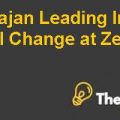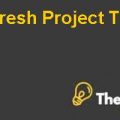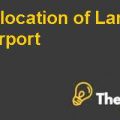A. P. Moller – Maersk Group: Evaluating Strategic Talent Management Initiatives Case Solution
Introduction
Maersk has adopted the policy to rely on the internal employees. The process started with the trainees being hired and after the training they are expected to continue with the company and make the career. But as per the fact the trainees are less likely to continue their career with Maersk in the long run which is also evident from the high turnover rate. Moreover, the company has the policy for the welfare and development of its employees through the training and development program. However,the company so far has failed to consolidate the benefits of this policy since the trained employees left the job and moved to other company after the training which increases the cost for the company.
Thus, this incurcost to the company without getting any return. The reason for that is the company is not providing favorable and market based remuneration as well as other working benefits. The company is now considering whether to hire employees for senior positions from the job market or rehired the former employees by offering them market competitive remuneration and perks.
While considering this the company has to identify the need to have diversified workforce. The use of the same internal workforce will negate the benefits of having the diversified work force. The external employees from different other organizations might have different approach and way of doing things that will be better from the existing process. The diversified workforce brings in different expertise that will aid in problem solving and decision making. Thus, the company has to consider the best approach for feeding its workforce machinery.
In integrating the case with the concepts of the International Human Resource Management, the company could be in a much better position by having the global database of employees from different cultures of the world which can be recruited globally. The company can gain and retain the skilled labor and shift the employees where they are willing to go. The overall process can help the organization in integrating HR policies across a number of its subsidiaries spread in several countries which can ensure the achievement of goals.
Problem Statement
In analyzing the given case, there are certain issues that the management is facing with relate to its talent management practices. The first and the foremost is the retention ratio. The increasing turnover rate is creating significant problems for the financials of the company as with the increase in the training and development cost of the new hires. It would create negative impact on the company revenues and profitability, Low workplace morale. Moreover, there would be reduction in the marketing and the recruitment return over the investment. Increase in the rate of attrition would create a huge hiring gap for the company which is also caused because of its nature of work.
Due to high attrition rate,there is a rising training and development cost which is another issue for the company. Proper training requires huge cost which must be aligned with the goals of the company because poor performance drive turnover rate and resulting in high cost.The last issue relates to the need of diversified employees................
This is just a sample partial case solution. Please place the order on the website to order your own originally done case solution.












